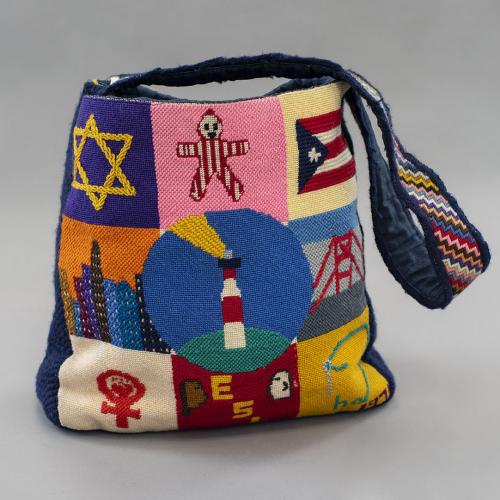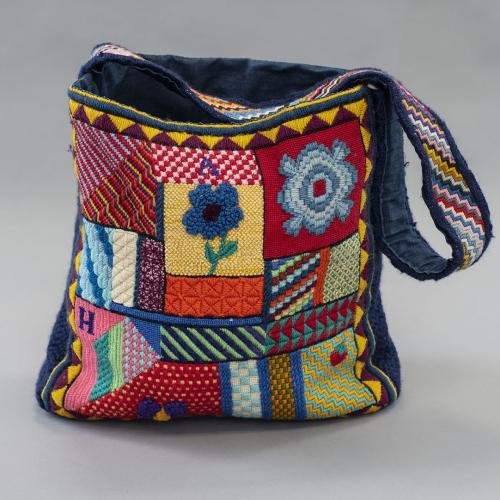New Acquisition: Harriet Alonso Needlework

Harriet Alonso began working with embroidery in 1974. Influenced by the imagery of political posters, she soon used the medium to express her ideas about the causes she was passionate about, including women’s rights, educational equality, and peace. Her works are a mix of adaptations of needlework patterns, but tweaked to express her own voice and design. Many of her embroideries are autobiographical. Her work as an ESL professor at CUNY, her research and writing on women’s history for her PhD and beyond, and her travels to countries like Cuba all appear as themes in her works.
Alonso’s needlework joins that of other women in the history collections of the New York State Museum who expressed their voices through media traditionally associated with women—needle and thread, yarn, knitting needles, and crochet hooks. The term “craftivism,” a combination of “craft” and “activism,” was coined to capture the intent of these works. Her embroidery also falls into a movement in the 1970s of using the visual language of posters in a variety of art media for the purpose of protest and activism.


One side of this bag includes symbols that tell the story of Alonso’s life: a lighthouse for Long Island, a Jewish star for herself, a Puerto Rican flag for her husband, a rag doll for their son, the Golden Gate bridge to represent the year they lived in San Francisco, the skyline of New York City for their long-time home, a feminist symbol for her activism, a reference to her work as an ESL teacher, and a needle and thread for her love of embroidery. That love is also represented in the “sampler” of stitches on the back, and the multi-colored Byzantine stitch on the strap.


